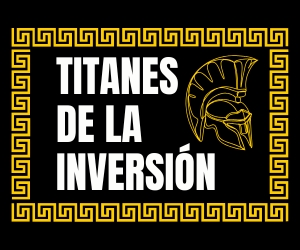Discover how NASDAQ transformed from an emerging market to the world's leading technology exchange through innovation and digital disruption.
Home
»
Investments
»
WHO IS MOHNISH PABRAI AND HOW TO INVEST LIKE HIM?
Explore the life and career of Mohnish Pabrai, his investment strategy, and his influential firm, Pabrai Investments. Perfect for both novice and experienced investors.

The Legacy of Mohnish Pabrai: A Buffett Emulator with His Own Style
Mohnish Pabrai, a prominent figure in the investment world, is known for more than just his impressive investment returns. Although he is often compared to Warren Buffett, Pabrai has carved his own path, marked by a simple yet effective investment philosophy. So, why is this man, who seemingly performs magic with numbers, well-known? Let's break it down.
A Man of Many Talents
Pabrai is more than just a fund manager; he is an author, speaker, and philanthropist. His most famous work, "The Dhandho Investor," is practically the bible for investors seeking guidance on Wall Street. And what about his public speaking? He appears at prestigious conferences worldwide, sharing his wisdom in true Dhandho style.
A Bold Career Change
In 1999, Pabrai left behind his successful technology company, TransTech, to establish Pabrai Investment Funds. And it turned out to be a great move. His funds have achieved returns that any retired fund manager would dream of. Making money seems easy when you read his story, right? But how did he really do it? The answer lies in his approach to value, which is as simple as it is uncompromising.
An Investment Philosophy Based on Value
What sets Pabrai apart is his adherence to the principles of value investing. Inspired by Benjamin Graham, of course, he looks for undervalued companies with considerable growth potential. His focus is on finding bargains in the market, a bit like shopping during the last five minutes of a Black Friday sale. In fact, he is a true value hunter with a keen eye for unseen opportunities.
Global Recognition
Globally, Pabrai is a legend in investor circles, but outside of them, many have not heard of his name. However, his success speaks for itself, and his fund manages hundreds of millions of dollars, which is no small feat compared to your bank balance. That's another reason why knowing Pabrai's story can benefit you; who knows, you might get hooked on the world of investments just by reading more about him.
A Touch of Philanthropy
In addition to his investment career, Pabrai is actively involved in philanthropic causes. He founded the Dakshana Foundation, aimed at improving the education of underprivileged students in India, because when you have a lot of money, you also have a moral responsibility to share some of it.
His Investment Strategy
For those looking to replicate Mohnish Pabrai's success, the key lies in understanding his investment strategy. We already know that everything is based on value, but let's break down his tactics—some might even make you scratch your head.
The "inflection point" rule
Pabrai doesn't obsess over diversification. Sure, sitting at a barbecue and hearing these kinds of tactics might seem strange to financial purists. Pabrai's rule is to maintain a concentrated investment portfolio. He believes it's better to throw a well-focused dart at a board rather than toss several blindly. Makes sense, right?
Buy low and sell high
It seems like a basic, overused strategy, but the trick lies in identifying when a company is "truly" cheap. Pabrai uses his instinct and his ninja-like mathematical skills to identify these companies. He doesn't follow the whims of the Wall Street crowd; he focuses on hidden opportunities. So while others are buying Beats, he's purchasing the generic headphones that are practically the same.
The concept of the margin of safety
Pabrai also emphasizes the importance of the "margin of safety." Essentially, this means buying stocks that are less likely to fall into a financial abyss. He's not a man who values things lightly, so there’s always a cushion between the purchase and potential catastrophe.
Learning from mistakes
Pabrai is a firm believer in learning from mistakes. For him, every failure is the best school. Instead of crying over spilled milk, he analyzes what happened to avoid spilling more milk in the future. An ingenious and effective way to look at losses, right?
About Pabrai Investments
Now that you understand a bit about who Mohnish Pabrai is and his investment philosophy, let's focus on his firm: Pabrai Investments. After all, it's said that the true success of a man is measured by scrutinizing his business from the inside.
The Birth of a Legend in the Investment World
Founded in 1999, Pabrai Investment Funds started with around one million dollars. Not much when you think of financial giants. But oh, have they grown. Today, they manage over 500 million dollars in assets. And to think they started like any other day begins, with bad coffee and a desire to conquer the world.
Unconventional Management
The firm is known for its unconventional approach to fund management. Pabrai's fee structure is basically: if you're not successful, neither are we. These guys work on a model where they only earn if you earn too. Wow, that’s a tightrope anyone would want to walk.
Investment Successes
The successes of the firm speak for themselves. While other funds waver under market pressure, Pabrai Investments has shown remarkable resilience. They bet on the long term, in contrast to the wild swings of day trading. Could this be the secret to their success? Perhaps.
A Look to the Future
With a constantly changing market, Pabrai Investments continues to provide lessons in patience. Mohnish believes that the game is in patience, and like a fine cheese, investment gets better with time. Or as Warren Buffett would describe it: "The stock market is a device for transferring wealth from the impatient to the patient." A piece of advice that seems to be followed to the letter.
Buying cheap, adhering to a value ethic, and not swaying with momentary trends sounds easier than it really is. But Mohnish Pabrai and his highly calculated practices teach us valuable investment lessons that, who knows, might save our bank accounts someday.
YOU MAY ALSO BE INTERESTED




